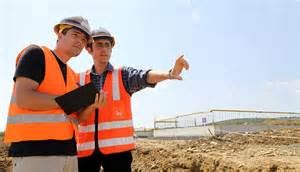 Construction is the industry with the most injuries and fatalities in the United States. To make the industry safer and cut the number of employee injuries and fatalities, the federal government, state governments and even local government passed laws mandating safety committees, their make-up, and even meeting content. Nevertheless, there are many reasons why construction companies should embrace safety committees.
Construction is the industry with the most injuries and fatalities in the United States. To make the industry safer and cut the number of employee injuries and fatalities, the federal government, state governments and even local government passed laws mandating safety committees, their make-up, and even meeting content. Nevertheless, there are many reasons why construction companies should embrace safety committees.
How Safety Committees Benefit Construction Companies
Talk to a safety professional and you soon realize that the most effective committees are committees that involve members from every level of the company or a company facility or job site.
When company executives and laborers and everyone between them participate, safety committees help prevent unsafe work practices and environments. Committees also cut employee exposure work-related injuries and illnesses. These accomplishments spur other employees to get involved in the company’s workplace injury and illness programs.
An active safety committee shows employees that the company care about employee health and safety; itself a motivator that improves productivity.
Another bottom line enhancer is that a strong safety record cuts workman’s compensation claims and in turn, reduces workman’s comp premiums.
When safety records are impressive, construction job sites are safer and accidents to visitors and passersby go down. In turn, premiums for commercial general contractor policies may plateau or even go down.
Moreover, a safe workplace record impresses project owners and makes a construction company a more attractive candidate for selection.
Measuring Safety Committee Value
Many companies mistakenly undervalue the value of environmental health and safety programs (EHS). Companies usually do not measure EHS correctly if at all. But, by using standard tools in the toolbox of business managers and in a way that executives understand company financial statements. Results of EHS can integrate and display as part of the overall EHS business strategy. Some popular tools used by EHS professionals to measure the return on investment (ROI) of EHS include:
- Six Sigma
- EMS/ISO 1400
- Baldwin Measurement
OSHA offers a tool called Safety Pays that helps figure out the ROI for a company’s safety program.
No matter what tool a company uses, construction companies that are committed to safety almost always sees a higher ROI for its efforts when compared to companies for which the safety committee is simply a means for compliance.






